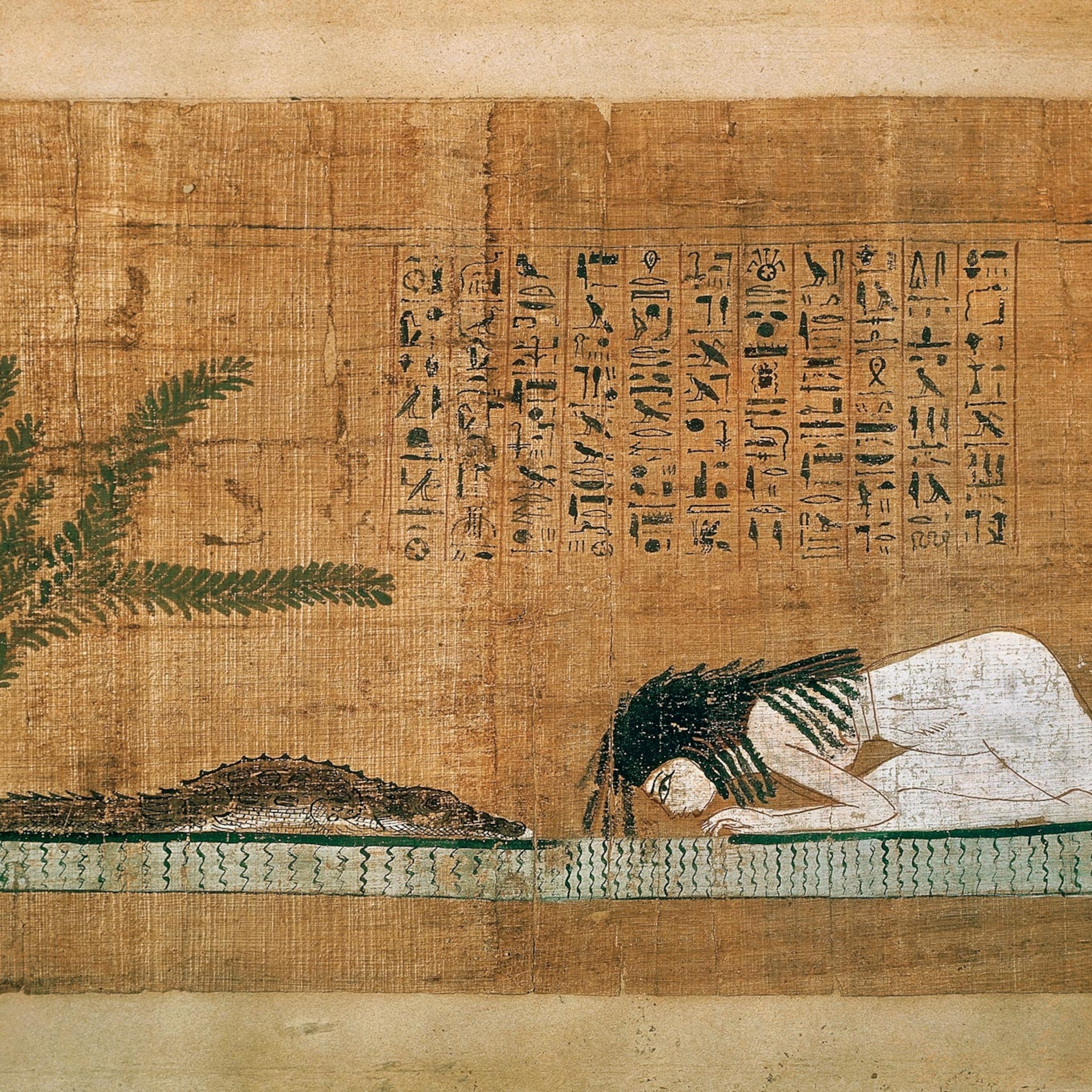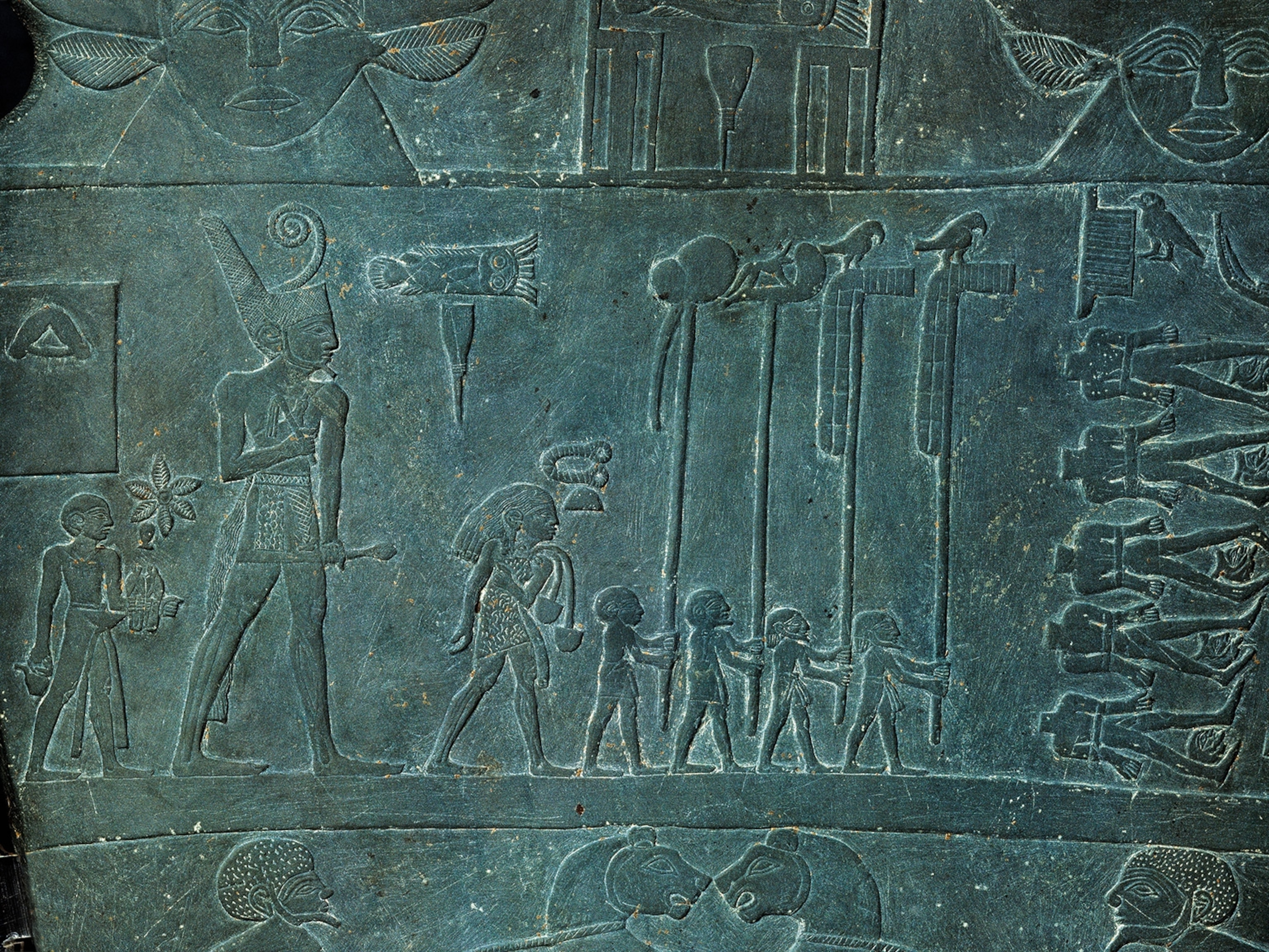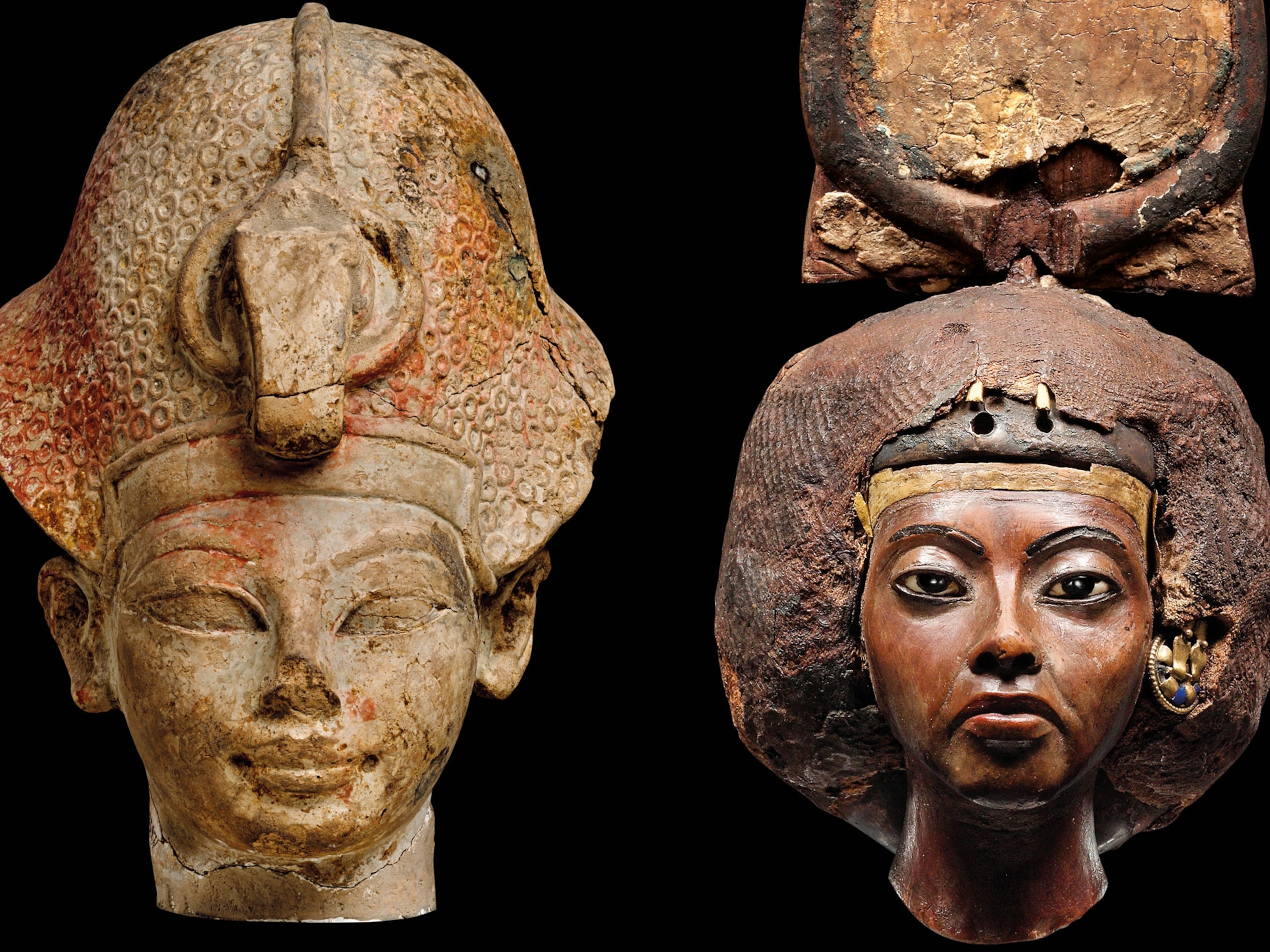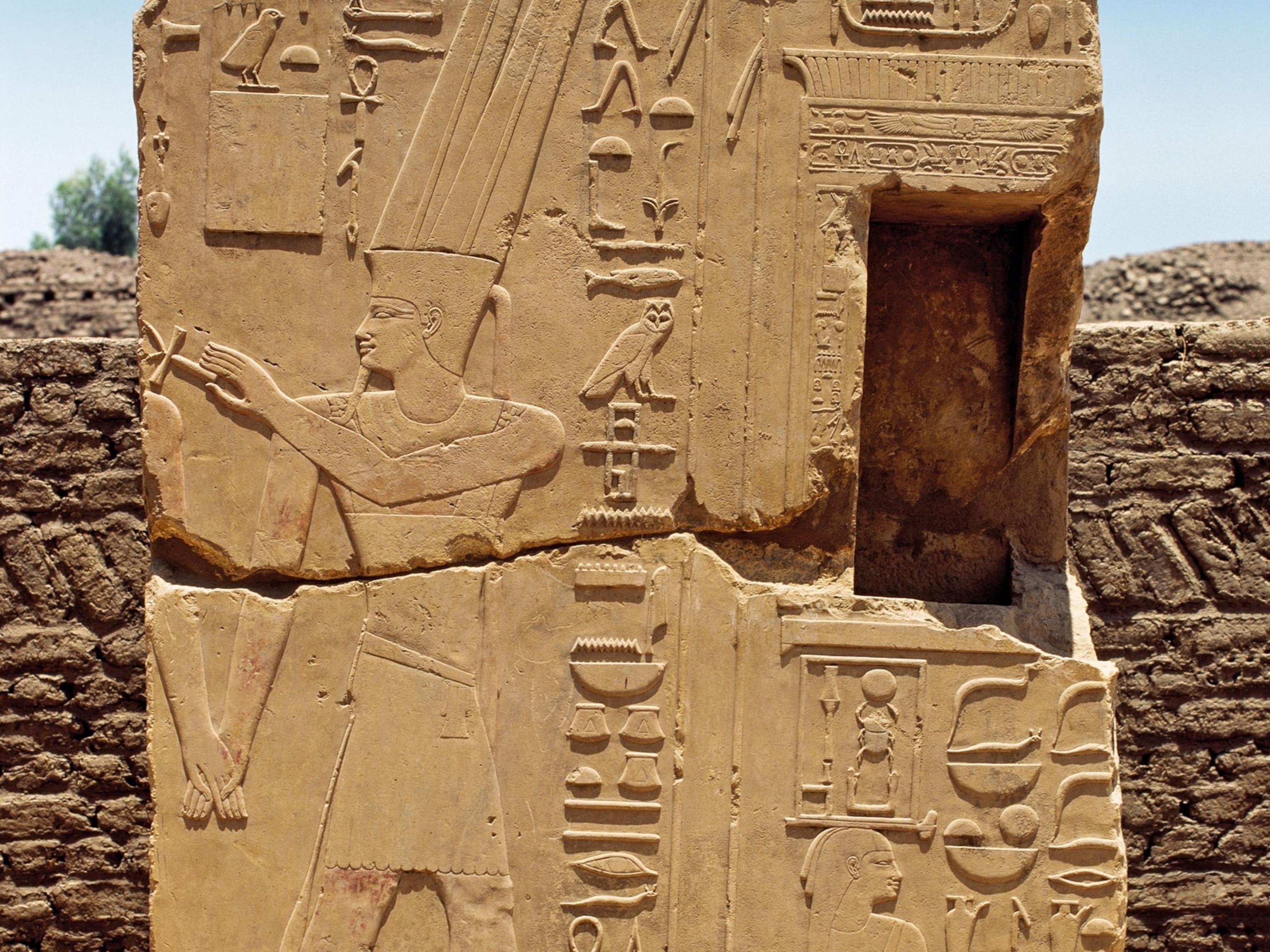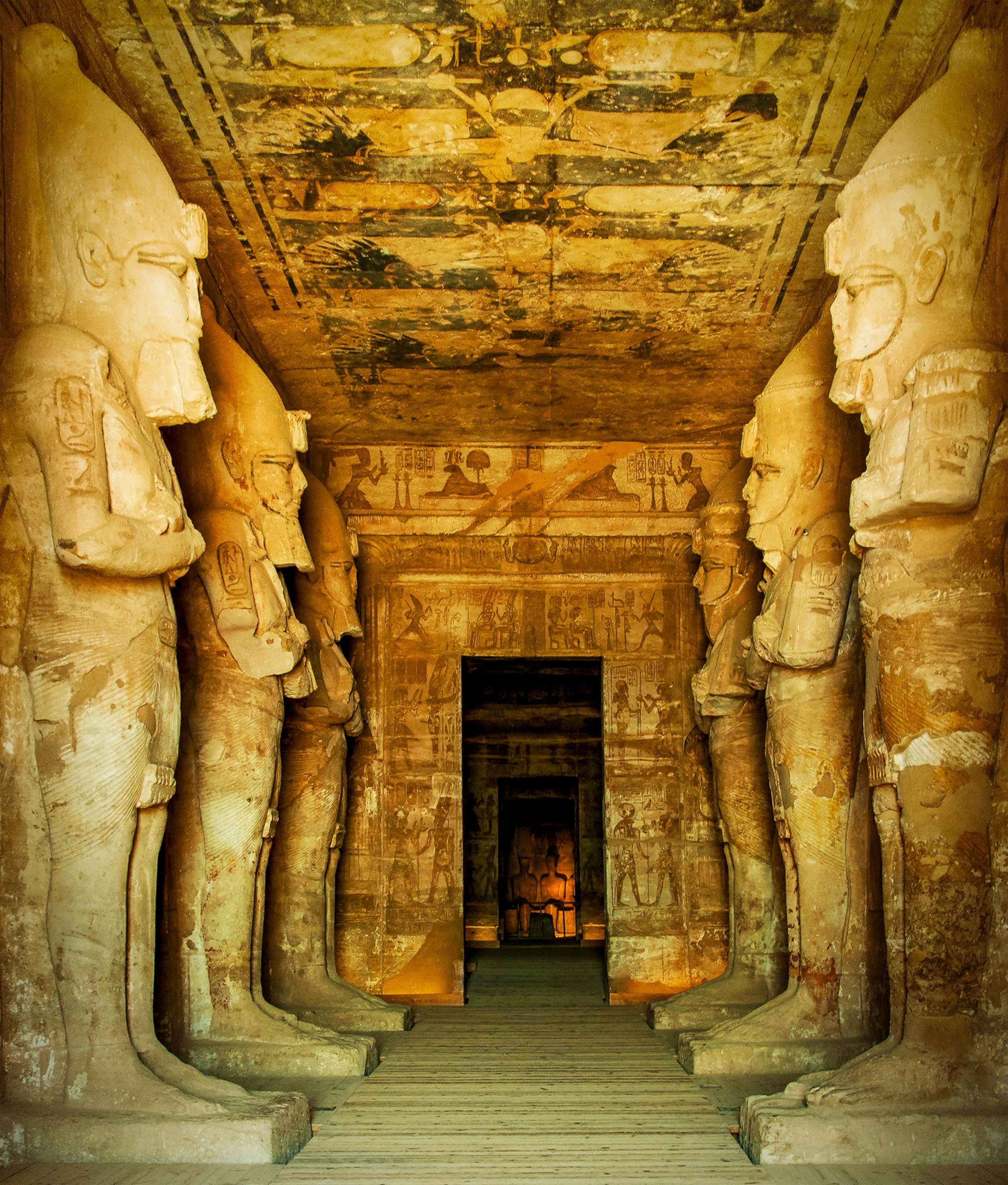
Inside One of Egypt’s Biggest Royal Weddings
Ramses II marriage to a Hittite princess might have strengthened political alliances, but the wedding plans were anything but smooth.

Ramses II enjoyed one of the longest reigns in Egyptian history. He spent more than 65 years on the throne during a period of military and cultural splendor which would win him the title Ramses the Great.
In 1249 B.C. Ramses II had been ruling for 30 years. To commemorate such a notable occasion, pharaohs held jubilee celebrations known as Heb Sed. Ramses chose his magnificent new capital city, Pi-Ramses, to stage a suitably lavish celebration for this milestone.
Nothing, for the moment, imperiled the prosperity and security of Egypt, especially the Hittites to the north, whose empire spread over modern-day Turkey and northern Syria. Ramses II had defeated them in 1275 B.C. at the Battle of Kadesh. Ramses presented his win as a crushing victory over the Hittites. He had 60-foot-tall statues of himself carved out of the sandstone in Lower Nubia near the Nile at Abu Simbel. Scenes of the battle adorn the halls of these astonishing funerary temples, exemplifying Ramses’ dual role as builder and public relations expert. Historians now know, by comparing Hittite and Egyptian accounts of the battle, that the outcome of Kadesh was probably less one-sided than Ramses’ depiction.

In 1258 B.C., partly as a result of that battle, the Hittite king, Hattusilis III, agreed to sign a treaty to bring the long hostilities between the two empires to an end, ushering in one of ancient Egypt’s most creative and prosperous periods. Nine years later, around the time of his 30-year jubilee, Ramses and the Hittites decided to work for a closer, political alliance by proposing a marriage between the pharaoh and a Hittite princess. And not just any princess: Envoys sent from the Egyptian capital, Pi-Ramses, made it clear the pharaoh had his eye on no one other than King Hattusilis’s firstborn daughter.
The two courts embarked on lengthy negotiations, whose twists and turns historians have interpreted from the clay tablets preserved in the archives of the Hittite capital, Hattusha, in the central region of modern Turkey. Discovered by archaeologists in 1906-08, the tablets have provided a wealth of detail on the day-to-day diplomacy between these two ancient empires and the intricate details involved in planning a royal union.
More Than Messengers
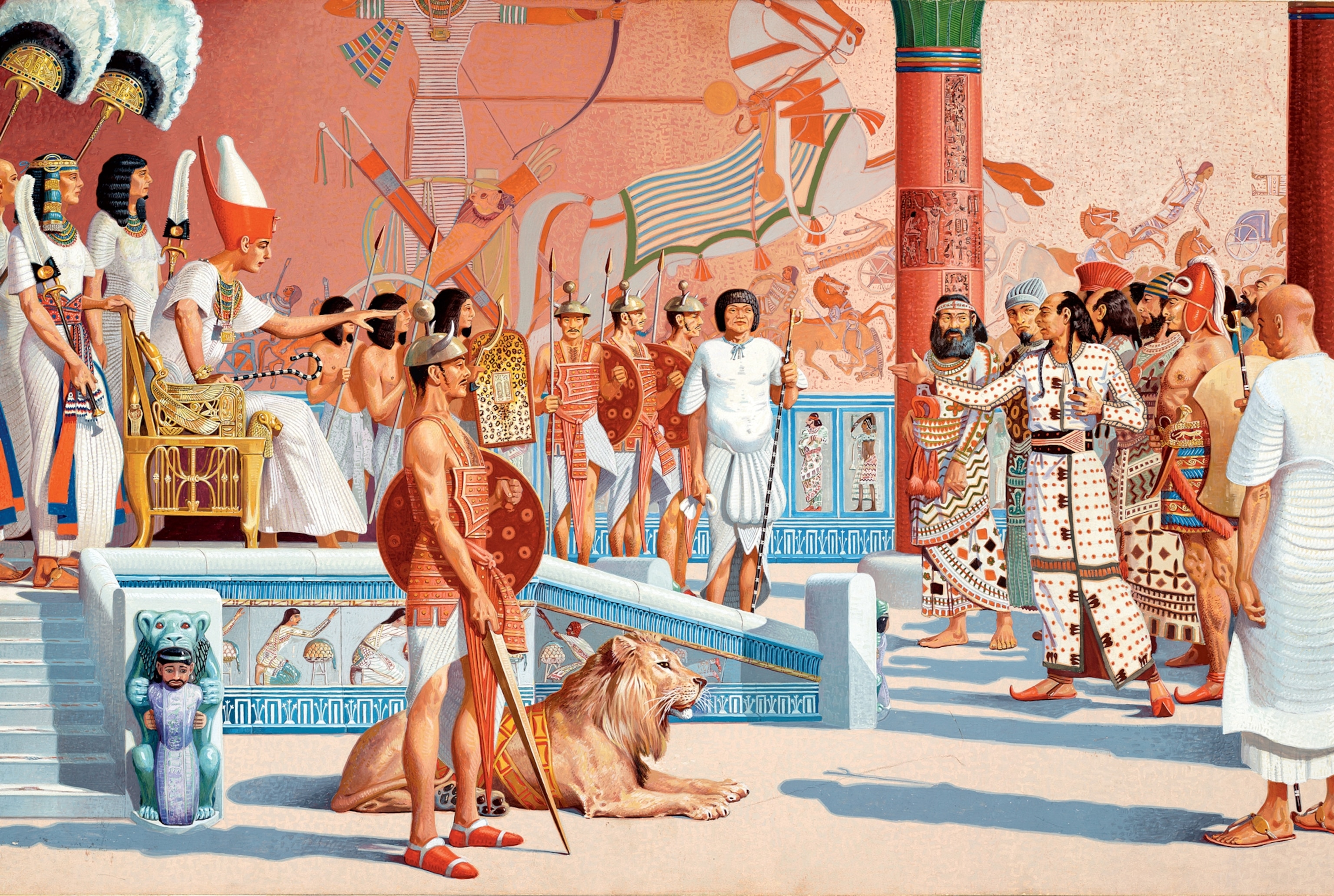
In the second millennium B.C. rulers did not usually meet one another as they do at modern summits. Diplomacy was conducted through people referred to by the Akkadian term mar shipri. These civil servants were both messengers and ambassadors at the same time, and many had royal or aristocratic blood. They bore expensive gifts, and were received with pomp and ceremony.
A Tough-Talking Queen
Written in cuneiform, the ancient writing was formed by pressing a wedge-shaped tool into wet clay. The Hittite tablets reveal how the pharaoh’s emissaries convinced the king to send Ramses II a formal marriage proposal. On the Hittite side, the arrangements were mainly conducted by Hattusilis’s consort, Queen Puduhepa, who focused on her daughter’s dowry.

When Ramses’ envoys complained about the delay in the new bride’s arrival, as well as the pithy size of the dowry promised by the Hittites, Puduhepa wrote to blame it on shortages and a fire that had ravaged the royal storehouses. The queen also reproached the pharaoh—whom she addressed as a “brother”—for his greed. “Does my brother have no possessions? ... But brother, you are getting rich at my expense! That is unbecoming of a great lord's renown and dignity.”
Nevertheless, she told him he would be satisfied: “The dowry will be more beautiful than the King of Babylon’s ... I will send my daughter this year; servants, cattle, sheep and horses will go with her.” A subsequent letter said the princess would take “magnificent tribute in the form of gold, silver, bronze, slaves, teams of horses, cattle, goats and thousands of sheep as gifts for the pharaoh.”
The main demand on the Hittite side was that the princess should hold the rank of principal wife. She was not to be a mere secondary spouse, in the same category as other Near Eastern princesses who had joined the pharaoh’s harem. Making the princess his principal wife was the only concession Ramses was willing to make.
Marriage Record

The account of the Hittite princess’s journey to Pi-Ramses was engraved on a large stela in the Great Temple at Abu Simbel. The Marriage Stela opens by exalting the pharaoh, portraying the Hittites as a subordinate power: “Thou commandest them ... forever and ever, together with the whole land of Kheta [the Hittites]. While thou shinest upon the throne of Re, every land is under [thy] feet, forever.” The stela then recounts the journey undertaken by the princess and her retinue: “Then they [came] with [their] possessions, and [their] splendid [gifts] before them, of silver and gold ... The great chiefs of every land came; they were bowed down, turning back in fear, when they saw [his majesty].”
Any suggestion that he might send Hattusilis an Egyptian princess in return was unthinkable. Pharaohs had entered into arranged marriages with foreign princesses for more than a century. Ramses himself had five non-Egyptian wives and his predecessor had seven. But the pharaohs never allowed their own daughters to go abroad. It was their way of demonstrating that, for all the military power of the Hittites, an Egyptian pharaoh enjoyed the higher status, in spite of the pretense of treating one another as equals in their letters. When Kadashman-Enlil I, a Babylonian king, dared ask for the hand of an Egyptian princess, the reply was blunt. Ramses II merely reminded him that “since time immemorial no daughter of the King of Egypt has ever been given [in marriage].”
The Bridal Brigade to Egypt
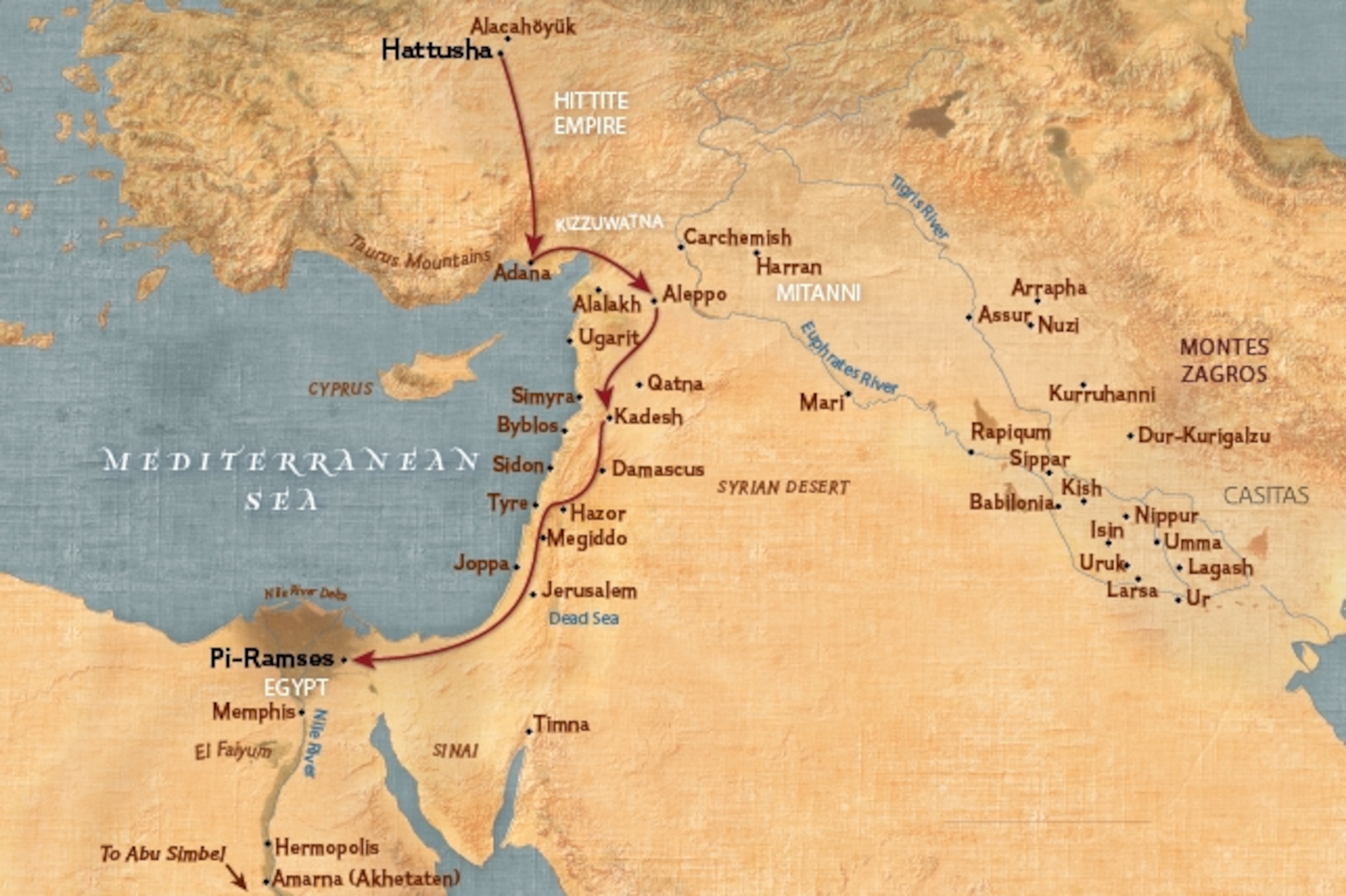
Having left Hattusha, Hattusilis’s daughter and her entourage headed south through modern-day Turkey to Adana, a city near the Mediterranean coast. From there, they proceeded through the Kingdom of Kizzuwatna to Aleppo in modern-day Syria, and finally to Kadesh, where the Egyptians and Hittites fought the famous battle years before. It was here, on the border of the Egyptian territories, that Queen Puduhepa bid farewell forever to her daughter. All that is known about the rest of the journey is what the Marriage Stela relates: The Hittite princess entered Egypt’s capital, Pi-Ramses, in the third month of the winter-spring season (peret) in the 34th year of Ramses’ reign: February of the year 1245 B.C.
The Road to Pi-Ramses
In a letter to Ramses, Hattusilis wrote that the bride was ready for her journey, so the pharaoh’s emissaries could set off to meet her at the border between the empires. “May they come and anoint my daughter’s head with fine oil and take her to the home of the Great King, the King of the land of Egypt, my brother!”

This is the only marriage ritual mentioned in the correspondence. It was widespread practice in the Near East, and raised the woman to a higher rank when she was engaged to be married. When he found out the young woman was on her way, Ramses was jubilant. “The Sun God, the Storm God, the Gods of Egypt and the Gods of the Land of the Hittites have decreed that our two great countries be united forever,” he wrote.
Few details about the bride have been recorded. The Hittite princess’s identity is only recorded with her adopted Egyptian name, Maathorneferure. She traveled to Egypt accompanied by a vast retinue—a common practice in the dynastic marriages of the time. Just over a century before, a princess from the Mitannian empire in what is today northern Syria, had arrived at Amenhotep III’s court with more than 3,300 ladies-in-waiting. These huge entourages acted as an ancient diplomatic service that could return valuable information back to their home countries. No wonder, then, that in one of her letters Queen Puduhepa insisted that those who were accompanying her daughter would be afforded full protection on arrival.
Puduhepa also took care to arrange security for the journey. The Hittite company may have been crossing vassal states, but they would never have been completely safe from attacks by bandits and nomads. Long remembered was an attack on a traveling Hittite prince a century earlier. He was killed en route to Egypt, more than likely by a faction from the Egyptian court that was opposed to his marriage to an Egyptian queen—possibly Tutankhamun’s widow, Ankhesenamun, or perhaps even Akhenaten’s widow, Nefertiti.

Puduhepa told Ramses that the princess would be escorted by Hittite troops, and that she would accompany her some of the way. King Hattusilis himself did not go with his daughter, because to have been seen in the retinue could have been interpreted as paying homage to a superior ruler.
Ramses, however, always the expert propagandist, simply ignored this absence when he documented the wedding. On the Marriage Stela in Ramses’ temple of Abu Simbel, the Hittite king is shown alongside his daughter, both figures submissively approaching and honoring the pharaoh.
An Uncertain Fate
According to correspondence from the period of Akhenaten, roughly a century before Ramses II’s jubilee, the quickest route from the Hittite capital to Egypt, took around a month and a half. However, the princess’s party took from three to six months to complete the trip.

“They have traversed many mountains and difficult ways, that they might reach the boundaries of his majesty,” recount the hieroglyphs of the Marriage Stela. The carved image shows Ramses awaiting her arrival, surrounded by the gods Ptah—one of the main state deities—and Seth, god of warfare and storms, for whom Ramses II’s father, Seti I, was named.
The festivities to celebrate the new queen’s arrival probably took place at Pi-Ramses, where the pharaoh’s jubilee had been held four years before. Her new name, Maathorneferure—meaning “Neferure, she who sees Horus”—was tied to a belief system that, despite some similarities, would have seemed very different to what she knew in her native Hattusha. Her fate, from that point on, became tied to that of Egypt and Egyptian culture. When the wedding finally took place, in 1245 B.C., she did become Ramses’ Great Royal Wife, as the previous queen, Isis-Nofret, had died after succeeding Queen Nefertari ten years earlier.
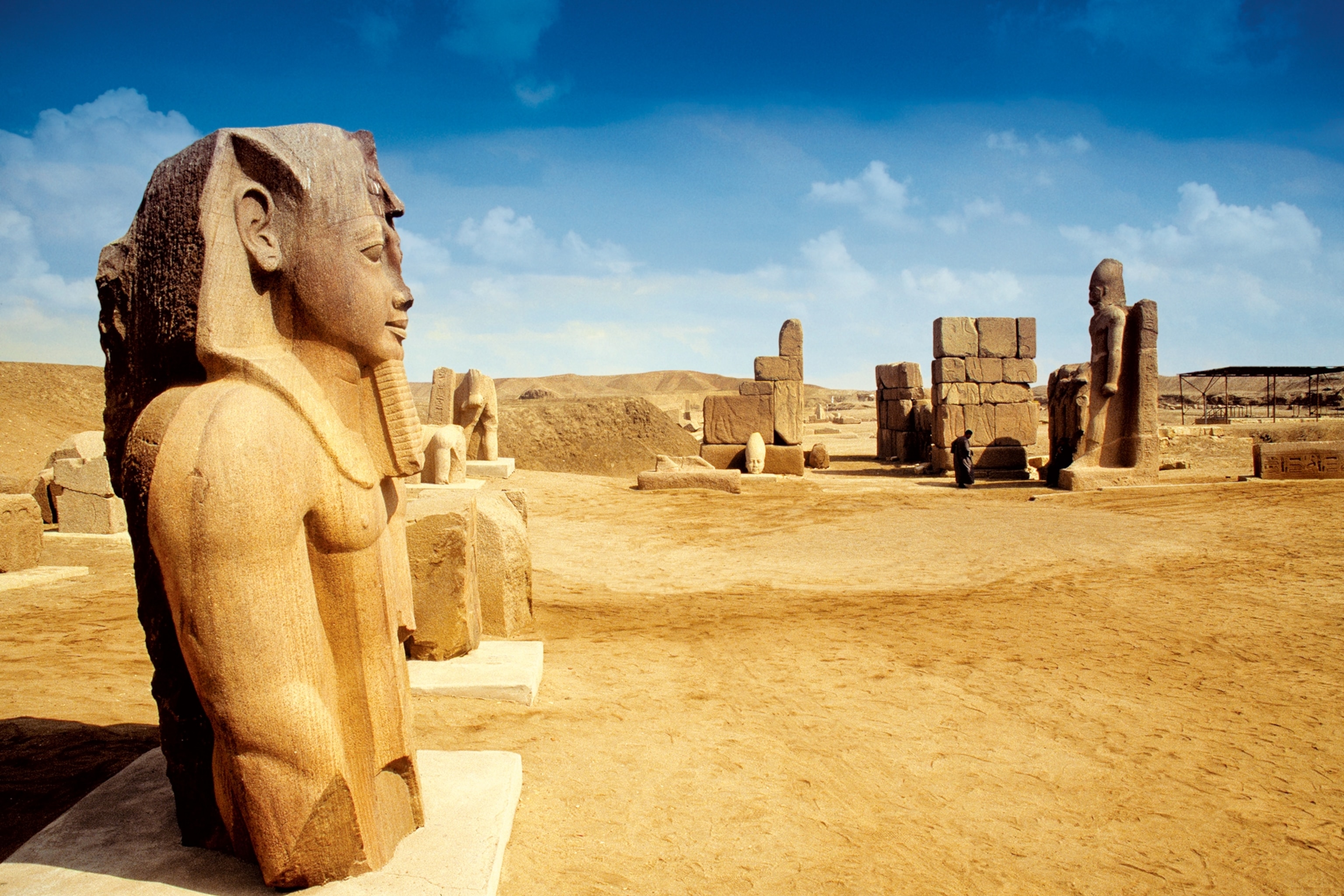
What became of the bride? Little about her life after marriage is known. She is not thought to have had any sons, although she probably bore a daughter. There is an inscription that proves that at one time Maathorneferure was living in the Gurob harem to the south of El Faiyum, which may mean that she lost her status as principal wife. In any case, a second Hittite princess later arrived to become Ramses’ wife, suggesting that Maathorneferure died and a second marriage took place to renew the alliance between the two great powers of the ancient world.
Asking a Divine Favor
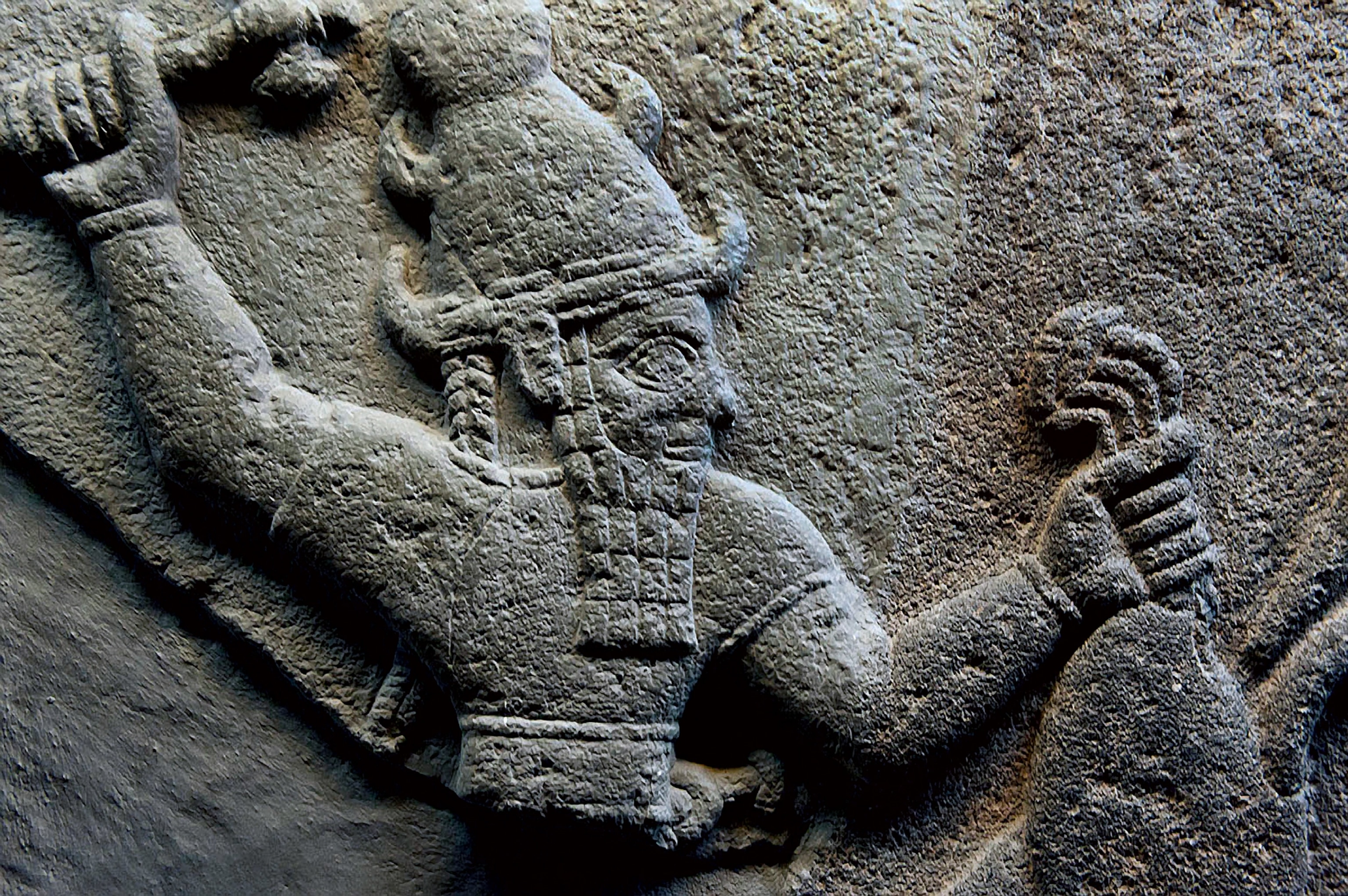
Egyptian and Hittite culture did have certain features in common. Teshub, the Hittite god of storms, was equivalent to the Egyptian divinity, Seth, who played a key role in the wedding preparations. The Marriage Stela records how Ramses II called on Seth to grant favorable weather for his bride-to-be’s long journey south.


